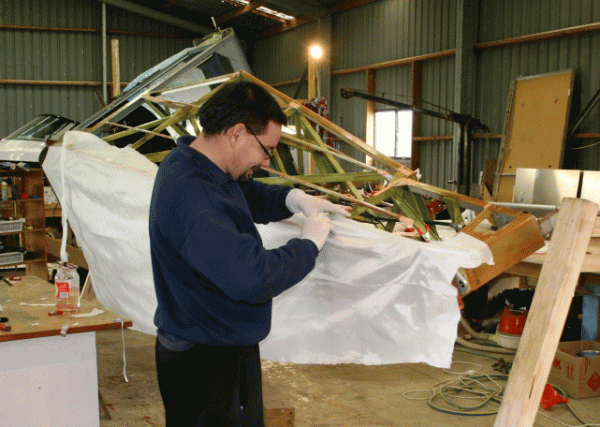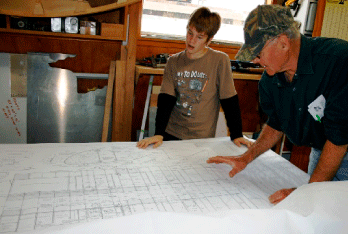Specific benefits include:
- The ability to closely match the aircraft to your own requirements
- Homebuilding may be less expensive than buying a factory built aircraft
- The cost can be spread over a period of time
- Operating costs may be lower than renting an aircraft
- More choice of available types
Choosing the right aircraft for you:
Consider the sort of flying you want to do and who you want to do it with.
- Aerobatics
- Short airfield operations
- Long range cruising
- Short hops
Consider whether you will be content to fly solo and want a single-seater, or prefer a two-seater (or more) to give you the option of taking passengers.
Homebuilt aircraft building techniques and project options
Aircraft building techniques are best considered in terms of what suits your skill base and comfort zone.
Your options include:
- Wood
- Tube
- Metal
- Composite
Homebuilt aircraft project options encompass a range of levels:
- Kit built
- Materials kit
- Plans built
- Own design
Other design considerations:
- Decide what type of engine best suits your requirements - factory built or an automotive conversion.
- If there is a choice of undercarriage for your aircraft, choose what will work best for your needs - options include tricycle, taildragger or even monowheel.
The THREE Fs' Checklist for homebuilding an aircraft
Finance, Facilities and Family – three essential components of achieving success.
Finance
Money, or the lack of it, is a big factor in whether a project gets finished or not.
- Cost out your project thoroughly
- Make allowances for unforeseen costs, certification, training and tooling
- Determine whether you will be buying everything at once with a lump sum payment or spreading costs over a period of time (both work, but drip feeding tends to be slower)
- Take into account any other financial commitments you are likely to have during the life of the project
Facilities
To achieve the completion of your project with the required building standards you need have the right environment, tools and equipment, and expertise.
- Environment - workshop space - It doesn't need to be big enough to hold the whole assembled aircraft - but it does need to be big enough to hold a completed section of fuselage or wing, with working space around it.
Bruce Cooke applying the fabric covering to the Fuselage frame of Avian Adenturer ZK-CKE

You will need a solid, smooth level floor, good lighting and a comfortable temperature. Having it beside the house means you can work on the project more often, but be aware of dust, noise and fumes getting through the house. Some people have even built their aircraft in their living rooms. - Tools and Equipment
Some methods of construction require special tools (some of which are expensive) such as sheet metal folders, drill presses, milling machines, welders etc. The exact requirements depend upon the type of aircraft you intend to build. Aircraft construction demands high quality, accurate tooling. Buying good quality tools will make your work much easier as well as creating a better result. -
Expertise - make an honest assessment of your skill level and experience
Building an aircraft is a learning exercise, so don't worry if you haven't had much experience or exposure to this craft. Instead, enlist the help of someone who does have experience. - SAANZ Mentoring Scheme
- This is where SAA can help - get a mentor who will give honest and knowledgeable appraisals of your work.
For aircraft construction, all work needs to be of the highest quality.

Murray Belfield (right) explains the Plans for his Aircraft to Andrew Parsons (who is also building an aircraft)
Family
Building an aircraft takes time – family support and understanding can hugely increase both your enjoyment and success.
- Discuss the project with your spouse/partner, family and friends
Building an aircraft can at times create stresses for you all and good communication and mutual support eases the process. Be aware that families often have to make compromises during the course of a project. Encouraging your partner and children to get involved can be a great way to spend time together.
- Be realistic about the time you can spend on your project
Regular work, a little each week, is the best way to keep a project going. Try not to go too long without doing something on it, however small - be sure this is feasible with your other commitments.
- Set a realistic completion goal
Kit manufacturers are known for under-estimating construction time. Always allow a significant amount of extra time to avoid being pressured to rush your project. Do what you can to minimise any external pressures (e.g. needing to vacate the workshop) that could affect your work.
